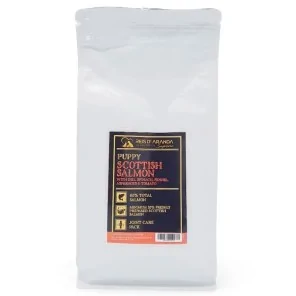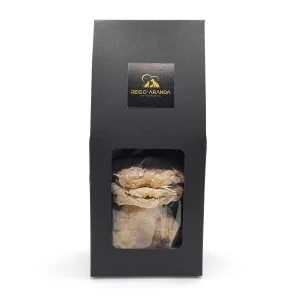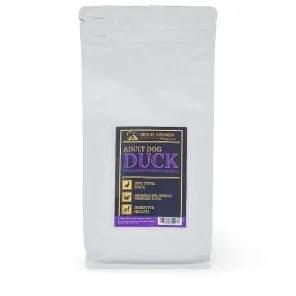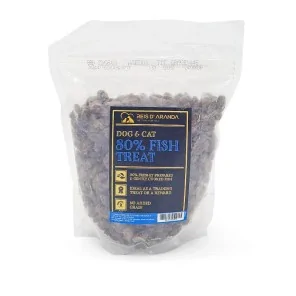Its name says it all: the Vienna blue rabbit comes from Austria. Not only is it beautiful with its shiny blue-grey...
THE DUTCH SCHAPENDOES DOG
INTRODUCTION
Dutch Schapendoes is one of the most popular dog breeds in Holland. Medium sized, noble in appearance and loyal in character, agile and intelligent, strong and fearless.
THE HISTORY OF THE DUTCH SCHAPENDOES
At the end of the last century and the beginning of the present century, the Dutch Schapendoes appeared in most places in the Netherlands where there were heaths and flocks of sheep. The shepherds esteemed him for his tireless spirit for work and his intelligence. He belongs to the versatile group of long-haired herding dogs with a thickly furred head. He is related to the Bearded Collie, the Puli, the Owczarek Nizinny, the Bobtail, the Briard, the Bergamasco and the German Shepherd Pudel in the variety occurring in Hessen, Odenwald and the lower regions of the Rhine. All these dogs, similar to each other, are small mutations of the mountain dogs. The quinologist P.M.C. Toepoel is the founder of this breed. During the Second World War he succeeded in arousing interest in this breed. Between 1940 and 1945 breeding was carried out with almost extinct Schapendoes wherever they were still to be found. In 1945 the development of the breed began in earnest. The Schapendoes breed club of the Netherlands was founded in 1947; in 1952 the breed was temporarily recognised by the Raad van Beheer. In 1954 the standard was established and the keeping of a studbook started. The final recognition was given in 1971 and since then only registered dogs have been bred.
THE STANDARD OF THE DUTCH SCHAPENDOES
GENERAL APPEARANCE: The Dutch Schapendoes is a long haired dog of light build with a height at withers between 40 and 50 cm. His movements are elastic and agile; he is an exceptional jumper.
HEAD: The abundant coat gives the impression that the head is larger and above all broader. The skull appears deeper than it really is.
CRANIAL REGION:
SKULL: Almost flat with moderate frontal furrow and prominent superciliary arches. It is quite broad in comparison with its length: its width is slightly greater than the distance between the stop and the occipital protuberance.
STOP: Remarkably developed, but not steep.
FACIAL REGION:
NOSE: The line of the muzzle is slightly less low than the line of the skull.
Muzzle: Shorter than the distance between the stop and the occipital protuberance. The muzzle tapers a little, remains deep and ends broad only slightly rounded. Seen from the side and with the muzzle closed, the lower jaw should be clearly visible.
TEETH : Scissor bite normally developed.
CHEEKS: The zygomatic bones are quite protruding.
EYES: Rather large, round and normally set in the eye sockets. They are set more towards the front than towards the sides of the head. Their colour is brown; they should not appear black. The white part of the eye should only be visible when the dog turns his gaze intensely sideways. His expression is open, loyal and lively. The shape, colour and expression of the eyes are characteristic of the breed.
EARS: Set fairly high set, neither large nor fleshy, hanging freely but not too close to the head. They have a long coat, are mobile, but should never extend beyond the line of the skull.
NECK: The head is carried by a strong, slender neck.
BODY: The Schapendoes is slightly longer than tall. The bone structure is light, supple and elastic.
UPPER LINE : Slightly arched over the loin, which is strongly muscled.
CHEST: Deep. The ribs are moderately to well sprung and extend well back.
BOTTOM LINE AND BELLY: Not too tucked up.
TAIL: Long, well covered with hair and feathering. The way the dog carries its tail is characteristic of the breed. In repose it hangs very low. When trotting, the tail is carried quite high, which swings noticeably from side to side forming a curve.
When galloping, it is carried horizontally. The tail is obviously used to direct the jump. When the dog is attentive, the tail is sometimes very high, but it should never be carried straight over the back.
LIMBS
FOREQUARTERS: The forelegs are straight and slightly structured. Good angulation of the forelegs should emphasize the forechest.
Pastern: Elastic.
HANDS: Fairly large and elastic, broad and oval in shape. The fingers are close together. The pads are thick, elastic and have abundant hair between them. Dewclaws are permitted.
HINDQUARTERS:
PELVIS: Set well obliquely.
TIBIO-TARSIAL JOINT: Moderately angulated and well muscled.
METATARSUS: Short.
FEET: Rather large and springy, broad and oval in shape. The toes are close together. The pads are thick, elastic and have abundant hair between them. Dewclaws are permitted.
GAIT / MOVEMENT: Because the Schapendoes prefers to gallop rather than trot during work, his movement should be light and springy, without excessive energy expenditure. He should be able to jump very well and turn quickly.
COAT
COAT: The Schapendoes has a thick coat with sufficient undercoat. The hairs are long, 7 cm or more in the region of the hindquarters. The hairs are not straight, but slightly wavy. No noticeably curly hair is permitted. The coat grows close together, thin and dry, but by no means silky. The coat has a tendency to cord in the areas where it is longest, which is why the Schapendoes attains a large volume, especially on the back of the body. The Schapendoes has an impressive topknot, beard and moustache.
COLOUR: All colours are permitted. However, a blue-grey to black colour is preferred.
SIZE
HEIGHT AT WITHERS:
- Males: 43 - 50 cm,
- Bitches: 40 - 47 cm.
FAULTS: Any departure from the foregoing points should be considered a fault and the seriousness with which the fault should be regarded should be in exact proportion to its degree and its effect upon the health and welfare of the dog.
DISQUALIFYING FAULTS:
- Aggressiveness or extreme shyness.
- Any dog showing clear signs of physical or behavioural abnormalities.
N.B.:
- Male dogs should have two apparently normal appearing testicles fully descended into the scrotum.
- Only functionally and clinically healthy dogs of typical breed conformation should be used for breeding.
HEALTH OF THE DUTCH SCHAPENDOES
In general, the Dutch Schapendoes is a healthy breed, with a life expectancy of about 12-15 years. However, like any other breed, the schapendoes is not exempt from diseases. One of the most common is progressive retinal atrophy, a hereditary disease caused by a genetic mutation.
THE PERSONALITY OF THE DUTCH SCHAPENDOES
The Schapendoes is a herding dog with a normal, harmonious body structure and an alert, lively character. In addition, he is intelligent, cheerful, lively, gentle, vigilant and possesses a strong temperament. He develops a great loyalty and affection for people he knows.
The Dutch Schapendoes is a clever and intelligent dog who loves to learn. In general, it is an easy breed to train, as it has a strong desire to please. However, they tend to be rather stubborn, so positive training must be continuous and disciplined. In addition, they are intelligent dogs and capable of making decisions on their own, so it is not uncommon for them to try to fool their trainers if they get the chance.
The breed is suitable for families with children and other pets, although it is important to socialise them correctly from an early age to avoid unwanted behaviour in adulthood. The schapendoes is a dog that loves to work. In addition, due to its intelligence and ability, it is an ideal breed for dog sports such as Agility or flyball.
CONCLUSION
As a good sheepdog, the Dutch Schapendoes is an intelligent, cheerful and lively dog, which tends to be always alert and vigilant. He has a friendly and lively character, but at the same time is quite temperamental.
Leave a comment
Log in to post comments
















